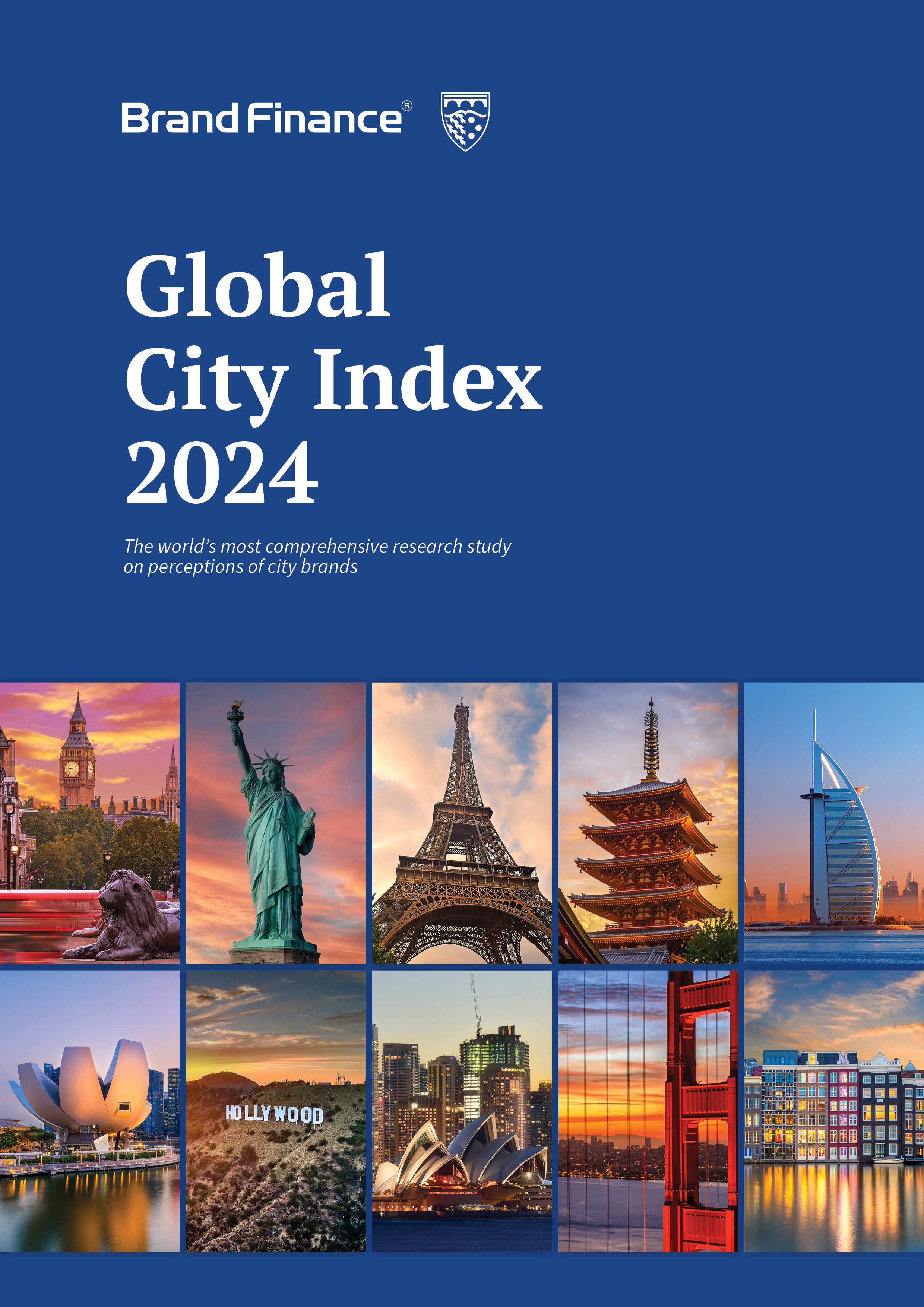This article was originally published in the Brand Finance Global City Index 2024.

Strategy & Sustainability Director,
Brand Finance

Senior Strategy & Sustainability Consultant.
Brand Finance
Though much attention is given to national sustainability policies, localized efforts are ultimately what translate legislation into tangible action. Given this, it comes as no surprise that sustainability is an important driver of consideration when deciding to visit, live, work, or study in a city.
Sustainability as a Driver of Consideration
Brand Finance’s latest Global City Index data assesses sustainability themes comprehensively. Environmental sustainability and governance have their own explicit pillars, and for this analysis we combine aspects of the People and Values and Liveability pillars to assess social sustainability.
Sustainability-related drivers of consideration for living in a city are shown in Figure 1. Among environmental attributes, a city’s cleanliness and care for the environment was the top-ranking driver, at 3.8%. On social sustainability attributes, the appeal of a city’s lifestyle was highest, at 3.7%.
Access to healthcare and the affordability of the city were less prominent social attributes, though arguably these factors contribute to an appealing lifestyle.
Altogether, sustainability-related attributes drive 37.2% of consideration to live in a city.
Best-Perceived Cities for Sustainability
The best-perceived cities on sustainability tend to rank highly on more than one pillar across Environmental Sustainability, People and Values, Liveability, and Governance. The top cities for each pillar are depicted in Figure 2.

Eight cities around the world rank in the top 20 on all four pillars: Copenhagen, Geneva, Melbourne, Sydney, Toronto, Vancouver, Vienna, and Zurich. Cities with top 20 ranks on three of the pillars include Amsterdam, Edinburgh, Luxembourg, Oslo, Singapore, and Stockholm.
This list of leaders highlights the dominance of Western Europe in sustainability perceptions, with Asia Pacific and North America also well-represented. European cities occupying top perceptual ranks may be in part because they exist within the most rigorous policy landscapes for sustainability action.
The most sustainably perceived European cities—Copenhagen, Geneva, Vienna, and Zurich—share a prioritisation of green spaces, abundant renewable energy sourcing, and large uptake of cycling and public transport modes. The nations they sit within all have either 2040 or 2050 net zero carbon emissions targets; in fact, Copenhagen set its own 2025 net zero target back in 2012 and continues to progress against it.
More broadly, cities across Europe and the rest of the globe have been vocal in their battles against over-tourism, on the grounds that high tourism is simply unsustainable. Cities like Amsterdam, Barcelona, and those across the Greek islands have instituted levies and seasonal bans to control crowds and preserve the integrity of neighbourhoods for residents.
Perceptual leaders in the Cities Index, however, have taken a different approach. Geneva spotlights sustainability for tourists with its own sustainability certification system, labelling venues that sell local products and products made from local premium agriculture practices.
Copenhagen piloted a rewards program that gamifies sustainability for tourists who opt into activities like biking or cleaning up the city, getting free entry into attractions, tours, or refreshments in exchange.
Do Perceptions Translate to Performance?
City-level sustainability commitments and initiatives often differ from greater national attitudes. In the United States, for example, cities are better positioned to set their own climate targets or incorporate more green spaces than the state or national government.
However, higher levels of government can issue mandates on topics like clean transportation or affordable housing, which cities are expected to deliver on.
Cities within nations that have strong sustainability associations tend to be subject to a ‘halo effect;’ that is, perceptions of a state, nation, or region as sustainable can positively influence city-level perceptions. Given these dynamics, perceptions and performance often become entangled.
In reality, cities around the world—sustainability leaders and laggards alike—share the challenge of acting to meet the aims of wider international agreements, like the 2015 Paris Agreement or the 2030 United Nations Sustainable Development Goals. Each city has its own constraints, from budgets to infrastructure to political gridlock, which affect its capacity to deliver on sustainability ideals.
Advice for City Brand Leaders
For city brands, demonstrating a commitment to sustainability is a delicate task. A city brand needs to carefully manage the associations it may have, for better or for worse, with the greater state, nation, or region it sits within.
When done right, sustainability-related communications can help support tourism, relocation, and talent attraction for study or work, so long as the messaging is accurate and relevant.
At a minimum, sustainability communications must be accurate to mitigate reputational risk and greenwashing accusations. Accuracy covers not exaggerating or misrepresenting actions taken, as well as not over-emphasizing achievements and positive highlights.
City brand leaders must balance accuracy with relevance: engaging stakeholders helps ensure that the city brand’s messaging resonates by focusing on the sustainability themes that matter most.
To communicate confidently, city brand leaders must also strive to build their sustainability literacy. Those responsible for communications can become well-informed about the city brand’s sustainability progress and goals by learning from those responsible for driving sustainability action.

